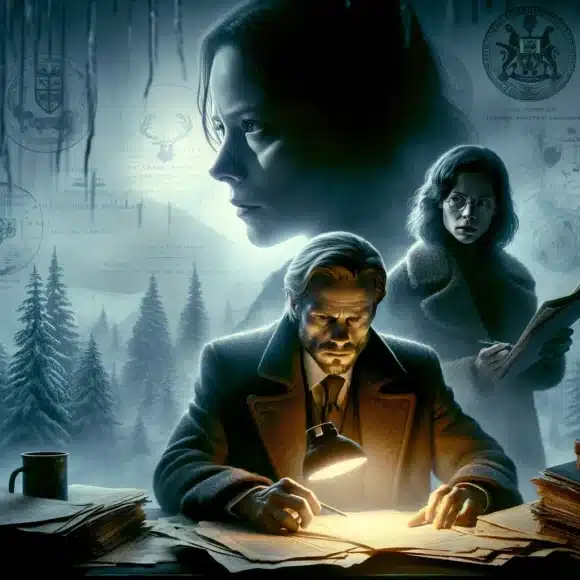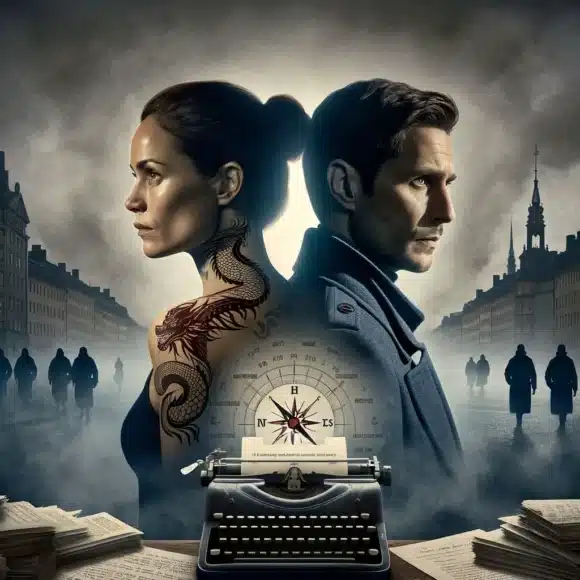Contents
Dan Brown’s The Da Vinci Code is a global bestseller that has captivated audiences since its release. Featuring high-speed chases and lessons in iconography, semiotics, and European art, the novel is a gripping thriller right from the start up to the turning of its last pages. The story’s fast-paced momentum, its puzzle-box structure, and its creative explanations of symbols have turned millions of casual readers into enthusiastic code breakers. Brown’s novel was also adapted for the big screen in 2006 by Ron Howard, starring Tom Hanks, after selling tens of millions of copies worldwide.

Why The Da Vinci Code Matters
Since its 2003 release, the novel has sparked conversations about the power of symbols, the conflict between institutional authority and new interpretations, and the role of the sacred feminine in histories often told by men. The book’s blend of Leonardo da Vinci’s art, the Louvre’s mystique, and mainstream secret society lore (the Priory of Sion, Opus Dei), along with various conspiracies, creates a page-turning thriller.
Author Check

Dan Brown, the mind behind the Robert Langdon series, crafts thrillers where symbology is the core element of the plot. With Angels & Demons, he introduced to the world Langdon’s world of codes, churches, and secret orders. His research-driven approach transforms art, myth, and semiotics into engaging story arcs, while his fast-paced style—characterized by short chapters, shifting perspectives, and relentless cliffhangers—keeps the story racing.
The Story (Spoiler-Free)
When a Louvre curator is found dead beneath the glass pyramid, his final message pulls Robert Langdon, a Harvard symbologist, and Sophie Neveu, a sharp cryptologist, into a trail of clues left behind and hidden in Leonardo da Vinci’s works and old European monuments. Their adversaries range from a relentless police captain, Bezu Fache, to secret organizations like Opus Dei. The chase is sleek, twisty, and held together by puzzles that are both revealing and thrilling.

Three Insights
1) The Power—and Ambiguity—of Symbols
Brown builds a puzzle world where symbols carry double meanings: what we see and what we’re meant to read beneath the surface-level explanation. The novel frames symbols (pentacles, chalices, spirals, and circles) as doors to deeper meanings, many of which are linked to the divine feminine(a central concept explored deeply in the novel). The pentacle—often maligned in modern lore—is represented as a symbol of that feminine principle; reinterpreting it becomes an act of recovery.
My takeaway 1: The thriller works because it treats readers as co-investigators/associates of Robert Landon. By inviting them to read like symbologists—seeing the deeper patterns and messages behind the surface level explanations—the book transforms passive reading into active, pattern-minded play.
2) Institutions vs. Inquiry
The tension evident throughout the story is not only between Langdon and the killer, but also between interpretation and institution. The story examines how accepted religious beliefs, practices, and artworks may have intentionally suppressed alternative accounts of history, particularly those related to early Christianity. The novel’s most charged scenes pose much deeper questions for the readers, asking them whether orthodoxy protects truth or power. That friction—between those who guard secrets and those who seek them—is a core element of the thriller.
My takeaway 2: Whether readers agree with Brown’s claims is secondary; the thriller serves as a thought experiment about how systems influence collective memory.
3) The Dangers of Extreme Fundamentalism
Both the self-flagellating monk, Silas, and the obsessed historian, Leigh Teabing, represent the threats of extreme fundamentalism. The idea that one’s truth is sacred and justifies any action, including murder, represents the fundamentalist’s fatal flaw. Brown demonstrates that extremes on both sides of religious orthodoxy and radical revelation lead to destructive outcomes.
My takeaway 3: Be cautious of individuals who are overly confident in their ideologies and are willing to go to extremes to defend them. Truth does not need violence. The theme of fundamentalism’s dangers and the critique of institutional hypocrisy provide readers with something to discuss beyond its pages.

What Sets The Da Vinci Code Apart
Brown’s core formula is simple and effective: treating readers as associate symbologists of Robert Langdon and explaining to them the deeper meanings of symbols, all while maintaining the high-thrilling chase. He turns The Last Supper, church floor lines, and cryptic initials into clues waiting to be discovered. At the same time, a revolving cast—Langdon and Neveu, Bezu Fache, Silas, Bishop Aringarosa, and the charismatic scholar Leigh Teabing—keeps the stakes high. The novel’s audacious re-framing of the Holy Grail—“not a cup,” but a living symbol tied to Mary Magdalene—remains one of its boldest claims in popular fiction.
Who Should Read This
Perfect for:
- Fans of Robert Langdon mysteries who like real landmarks, gallery nights, and riddle-studded chase sequences.
- Readers curious about Leonardo da Vinci’s art, Louvre lore, the Priory of Sion, Opus Dei, and the cultural afterlife of Mary Magdalene.
- Anyone who enjoys high-concept page-turners and wants a best seller that still invites discussion.
Skip if: You demand strict historical accuracy inside fiction or prefer deeply developed characters over action-packed chases. (The novel openly plays with scholarship, and that playfulness has drawn sharp criticism and legal challenges—even as courts ruled in Brown’s favor and the book’s sales soared.)
Character Notes
- Robert Langdon: A calm, logical professor who relies on patterns to solve problems.
- Sophie Neveu: A sharp cryptologist whose personal past raises the stakes.
- Silas & Bishop Aringarosa: Show how extreme faith can turn dangerous.
- Leigh Teabing: A charming scholar whose obsession changes the course of events.
Memorable Quotes
“Pain is good.”
“We fear what we do not understand.”
History is always written by the winners. When two cultures clash, the loser is obliterated, and the winner writes the history books—books which glorify their own cause and disparage the conquered foe.
Bottom Line
The Da Vinci Code delivers an idea-driven, clue-driven ride that turns museums, chapels, and canvases into a living cryptogram. While its historical claims invite debate, the storytelling—the short chapters, shifting POVs, and relentless pace—keeps the pages turning. The novel’s synthesis of symbolism, sacred feminine inquiry, and progress vs. tradition gives it an academic weight that outlasts its final pages. It’s easy to see why the book went from page to film adaptation and why author Dan Brown became synonymous with Robert Langdon’s brand of scholarly suspense.
Worth your time?
Yes—if decoding art, reading cities like ciphers, and following Langdon and Neveu across Europe sounds irresistible.
Related reading
Readers will also enjoy other Robert Langdon adventures by Dan Brown in Angels & Demons, The Lost Symbol, Inferno, Origin, and the latest, The Secret of Secrets.
What resonated most with you in The Da Vinci Code? Share your thoughts in the comments below.








Thoroughly enjoyed your breakdown of The Da Vinci Code, Vishal. It certainly brings to light why this book garnered so much attention. The blending of historical facts with fiction not only entertains but educates. Looking forward to your next analysis!
Thank you so much for your positive words, Priya! Glad you enjoyed the analysis and found value in the history-meets-fiction blend.
Hey Vishal, was just going through the insights section, especially about symbols and their power. It’s kinda cool but confusing? How do symbols in The Da Vinci Code directly reflect on today’s society? Would love some examples.
Great question, Mrunal! Symbols in the book reflect how we often overlook deeper cultural meanings in everyday life—happy to give some examples if you’d like.